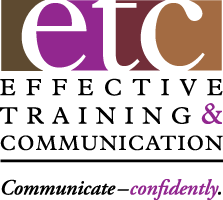As regular readers may recall, I’m a resident expert on sales pitches for Cleveland’s Council of Smaller Enterprises ‘Mind Your Business’ blog. I recently responded to a question from R.G. in Beachwood about what you should do if you conclude you’re not the client’s best choice during the fact-gathering conversations.
The answer may seem obvious, but let’s get down in the weeds to consider options when you realize that you can’t do it as fast or as well or as inexpensively as the prospect requested.
A. The simplest and easiest option is to just tell the truth. Indicate that you now realize that you’re not positioned to be able to give them what they need and want. Thank them and walk away. No shame in retreat here – simple, honest and courteous … but, there may be better choices worth evaluating.
B. Consider telling them what you can do and why and let them determine if that’s enough of what they thought they wanted to still choose you anyway. It’s their call, not yours but do try to negotiate a win-win. I’ve had several engagements where I didn’t think I was the best choice for a prospect’s needs, but let them make that call. Some went with me anyway and we were both happy with the results. You never know until you try!
C. If you can’t do it all, can you do part of it? Can you partner with a colleague or their in-house resources to do the rest? Part of the engagement is better than none of it. However, these partnerships need to be well established and vetted before suggesting them. And you always run the risk of your partner not meeting your or the prospect’s expectation. Ask yourself if you have the appetite for that kind of risk. But, remember, if you did walk away, you’d have nothing to risk … but nothing to gain, either. You miss 100% of the shots on goal that you don’t take.
D. If it’s a pricing issue and you can’t do it for less, can you do less of it and still keep them happy? Part of your cost may be speed of delivery, value-added components or timing of launch or delivery. Engage in a thorough analytical discussion with the prospect to clearly define their ‘gotta haves’ and separate them from their ’wanna haves’ or ‘like-ta haves.’ Now, can you handle the ‘gotta haves’ at a price that works for your needs and theirs?
E. And, finally, be realistic. How thorough, accurate and practical are the requirements listed in the prospect’s RFP? They may be so unrealistic that no provider would be able to meet them and still make a profit. How accurately are you evaluating your own real capabilities compared to those requirements? You may be too self-critical. So, as mentioned above, clearly state your case and value proposition. Let the prospect decide how close you come to what is really needed and how you compare to the other providers in play.
So, add these strategies to your growing Sales Pitch Tool Kit and commit to trying some of them. And don’t tell me something won’t work unless you can tell me that it didn’t work. One may actually help you accomplish both your sales pitch goal … and objective.
Happy Pitching!
